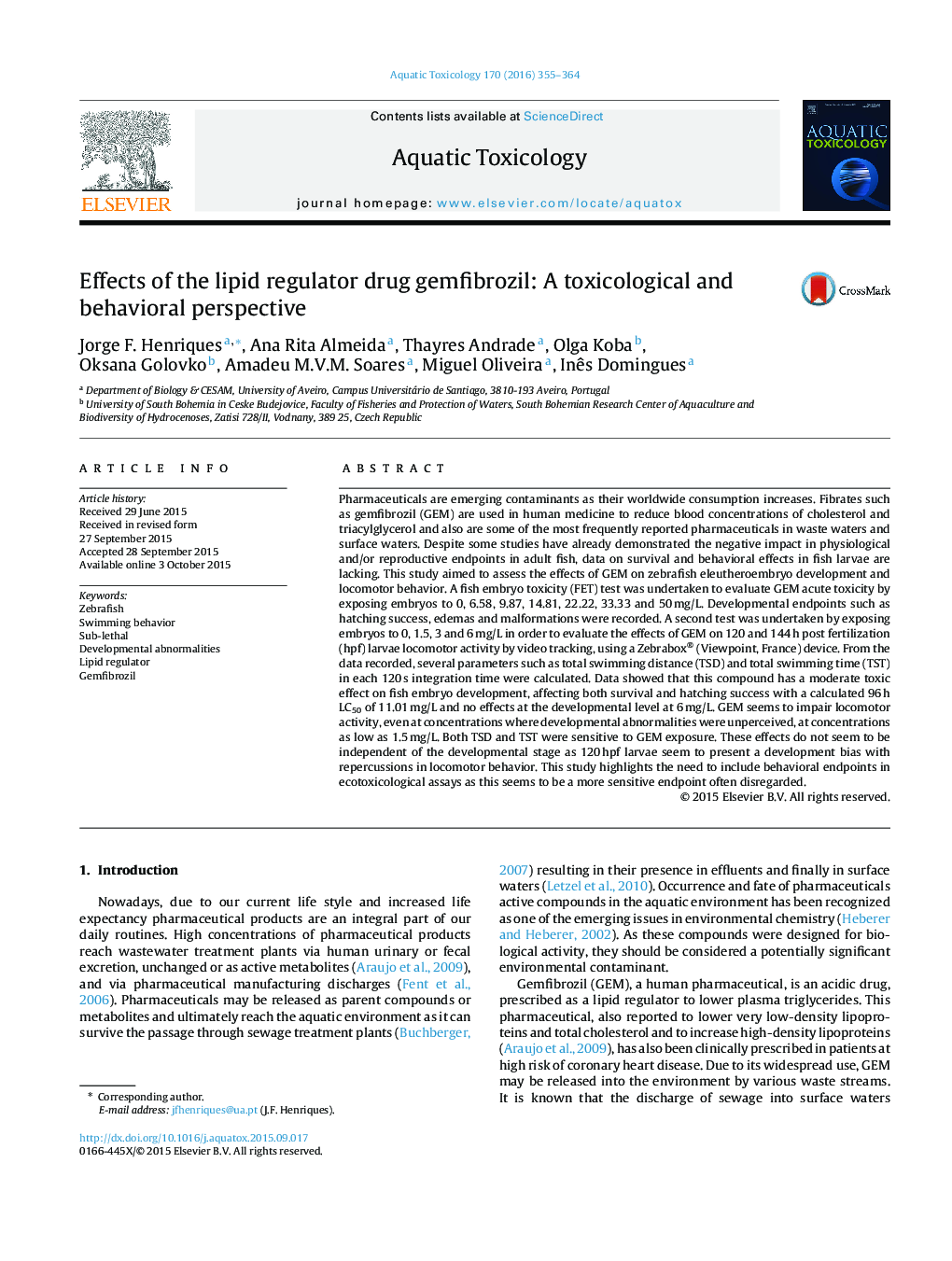| Article ID | Journal | Published Year | Pages | File Type |
|---|---|---|---|---|
| 4528996 | Aquatic Toxicology | 2016 | 10 Pages |
•GEM concentrations not causing perceived developmental effects significantly impaired behavioral endpoints.•Selection of eleutheroembryos stages is highly relevant in swimming behavior assessment.•Behavioral endpoints are recommended for toxicity screening due to their high sensitivity.•Fish acute toxicity (FET) test and behavior emphasize the need to study GEM effects in fish.
Pharmaceuticals are emerging contaminants as their worldwide consumption increases. Fibrates such as gemfibrozil (GEM) are used in human medicine to reduce blood concentrations of cholesterol and triacylglycerol and also are some of the most frequently reported pharmaceuticals in waste waters and surface waters. Despite some studies have already demonstrated the negative impact in physiological and/or reproductive endpoints in adult fish, data on survival and behavioral effects in fish larvae are lacking. This study aimed to assess the effects of GEM on zebrafish eleutheroembryo development and locomotor behavior. A fish embryo toxicity (FET) test was undertaken to evaluate GEM acute toxicity by exposing embryos to 0, 6.58, 9.87, 14.81, 22.22, 33.33 and 50 mg/L. Developmental endpoints such as hatching success, edemas and malformations were recorded. A second test was undertaken by exposing embryos to 0, 1.5, 3 and 6 mg/L in order to evaluate the effects of GEM on 120 and 144 h post fertilization (hpf) larvae locomotor activity by video tracking, using a Zebrabox® (Viewpoint, France) device. From the data recorded, several parameters such as total swimming distance (TSD) and total swimming time (TST) in each 120 s integration time were calculated. Data showed that this compound has a moderate toxic effect on fish embryo development, affecting both survival and hatching success with a calculated 96 h LC50 of 11.01 mg/L and no effects at the developmental level at 6 mg/L. GEM seems to impair locomotor activity, even at concentrations where developmental abnormalities were unperceived, at concentrations as low as 1.5 mg/L. Both TSD and TST were sensitive to GEM exposure. These effects do not seem to be independent of the developmental stage as 120 hpf larvae seem to present a development bias with repercussions in locomotor behavior. This study highlights the need to include behavioral endpoints in ecotoxicological assays as this seems to be a more sensitive endpoint often disregarded.
